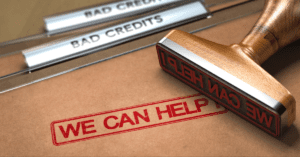Strategies for Navigating Rising Canadian Household Debt
With household debt on the rise, you’ve probably noticed that the cost of living keeps on climbing. And to cope with these ever-increasing expenses, more and more of us are turning to credit. In fact, according to a recent report from TransUnion, the average credit card balance now stands at a whopping $4,000! That’s not pocket change, and it’s something we all need to pay attention to.
In this article, we’ll dive into the details of this report. We’ll discuss what’s causing this surge in debt, how it’s affecting Canadians, and most importantly, what you can do to navigate these turbulent financial waters and seek debt relief options.
The Alarming State of Canadian Household Debt
Statistics from TransUnion’s Report
Let’s start with the numbers. TransUnion’s Q2 2023 Credit Industry Insights Report revealed some eye-popping stats. Canadian household debt has seen a 4.2% increase year over year, reaching a jaw-dropping $2.34 trillion in total. The primary culprit? Mortgage loan debt, which has grown consistently for the past five quarters, with a staggering nine percent year-over-year increase.
This is a wake-up call for all of us. It’s essential to understand what these numbers mean for our financial well-being and the options available to reduce debt.
Impact on Consumers
Now, let’s talk about how this debt tsunami is affecting Canadians and how they can alleviate stressful debt.
Increased Minimum Payments
One significant consequence of rising debt levels and interest rates is the increased minimum payments on our loans and credit cards. Trust me; I’ve seen countless cases where these higher minimums put additional strain on already financially stressed households.
You see, this sudden and often unexpected rise in minimum payments is referred to as “payment shock.” It can have dramatic consequences as some consumers are forced to decide how to allocate their discretionary income. In some cases, it means choosing between paying essential bills or servicing debt. It’s a tough spot to be in, and I’ve seen firsthand the stress it can bring.
Vulnerable Demographics
While Canadians have historically shown resilience, there are now signs of certain individuals, particularly the younger generation (Gen Z), struggling in this higher interest rate environment. This isn’t to say that older generations have it all figured out, but the financial landscape is changing, and we all need to adapt.
As Matthew Fabian, the director of financial services research and consulting at TransUnion in Canada, points out, Canadians remain resilient. But with the combined pressure of a high cost of living and elevated interest rates, the cost of debt has grown heavier for many households.
The Growing Burden of Credit Card Debt
Credit Card Debt Statistics
Let’s turn our attention to credit card debt, one of the most common forms of consumer debt. According to the report, the number of Canadians with credit card debt increased by 3.3% in the first quarter of 2023. That means more of us are juggling those monthly balances.
And it’s not just about the number of people carrying credit card debt; it’s also about how much debt they’re carrying. On average, Canadians are now shouldering over $4,000 in credit card debt. That’s not chump change, and it’s mainly due to our spending habits.
Spending Habits
I once had a client who used their credit card to pay for all their daily expenses, from groceries to gas. They didn’t realize it, but those small everyday charges were adding up quickly. By the end of the month, they were shocked to see their credit card bill.
The report shows that the average consumer spent $2,100 on their credit cards in the second quarter of 2023, a 1.5% increase from the previous year. Even consumers with lower credit scores were spending more, up by four percent year-over-year, with an average of $1,300 per quarter. But here’s the kicker: as spending rose, the amount consumers paid toward their card balances each month decreased by 2.8% year-over-year.
In essence, we’re spending more, but we’re not paying off our credit card balances as quickly as we used to. It’s a concerning trend.
Demand for New Credit Cards
Now, here’s another concerning trend: the demand for new credit cards is on the rise. In the second quarter of 2023, there was a 17% increase in demand compared to the previous year. And it’s not just one group driving this increase; it’s happening across the board.
When it comes to lenders, they’ve responded by experiencing a 12% year-over-year growth in origination volumes. This signifies an increased risk appetite among lenders, with below-prime originations growing by 16% and prime and better originations increasing by six percent.
Strategies for Managing Debt
All these statistics might be a bit overwhelming, but don’t fret. There are steps you can take to regain control of your financial situation.
Recognizing the Signs of Financial Distress
First, it’s crucial to recognize the signs of financial distress. If you find yourself constantly struggling to make minimum payments, using credit to cover daily expenses, or feeling overwhelmed by debt, it’s time to take action.
Seeking Professional Advice
Don’t hesitate to seek professional advice from a licensed insolvency trustee. These experts specialize in debt relief and can help you explore your options. Whether it’s a consumer proposal or bankruptcy, they’ll guide you through the process and tailor a solution to your unique circumstances.
Developing a Personalized Debt Management Plan
Finally, work on developing a personalized debt management plan. This could involve creating a budget, cutting unnecessary expenses, and finding ways to increase your income. It might not be easy, but taking proactive steps toward managing your debt is the first and most crucial step toward financial freedom.
Conclusion
In conclusion, the rising household debt in Canada is a pressing issue that affects many of us, especially those in the lower-middle class. The increasing cost of living and rising interest rates have created a challenging financial landscape, highlighting the importance of exploring debt relief options.
The key to financial stability is making informed decisions and seeking help when needed for debt relief. Don’t let debt drag you down; take action today to regain control of your financial future. Whether it’s through debt consolidation, consumer proposals, or bankruptcy, there are debt relief solutions available to help you on your journey to financial peace of mind.
**Click Here to Reduce Your Debts**




